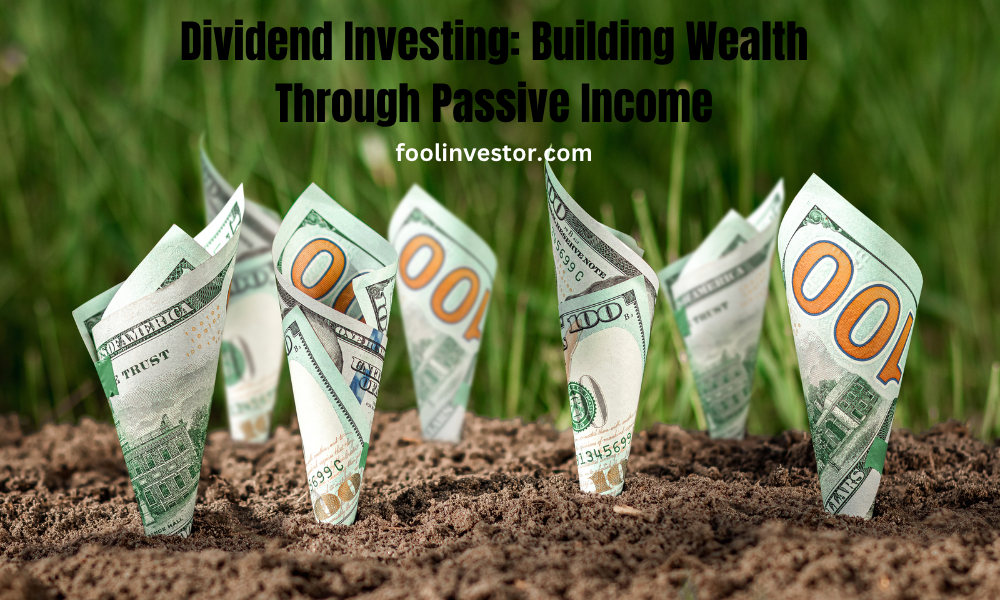Dividend investing is a popular strategy that allows investors to generate passive income by owning dividend-paying stocks. By understanding the fundamentals of dividend investing and adopting a long-term approach, individuals can build wealth while enjoying regular cash flow.
In this article, we will explore the basics of dividend investing, its benefits, and essential tips to help you succeed in this rewarding investment strategy.

1 – What is Dividend Investing?
Dividend investing involves purchasing stocks from companies that distribute a portion of their profits to shareholders in the form of dividends. These dividends can provide a steady stream of income, making dividend investing an attractive option for income-oriented investors. Dividend payments are typically made on a regular basis, such as quarterly or monthly, depending on the company’s dividend policy.
2 – Benefits of Dividend Investing –
Dividend investing offers several advantages for investors:
a. Passive Income: Dividend payments provide a reliable source of passive income, allowing investors to enjoy regular cash flow.
b. Compounding Growth: Reinvesting dividends by purchasing additional shares can lead to compounding growth over time, exponentially increasing the potential returns.
c. Stability: Companies that consistently pay dividends often exhibit stable financial health and have a track record of generating profits.
d. Inflation Hedge: Dividend payments can act as a hedge against inflation, as companies often raise their dividend amounts to keep pace with rising costs of living.
3 – Selecting Dividend-Paying Stocks –
To build a successful dividend portfolio, it’s essential to identify suitable dividend-paying stocks. Consider the following factors:
a. Dividend Yield: Evaluate the dividend yield, which represents the annual dividend payment divided by the stock price. A higher yield signifies a higher return on investment, but be cautious of unusually high yields, as they may indicate financial distress.
b. Dividend Growth: Look for companies that have a history of increasing their dividends consistently. This demonstrates a commitment to rewarding shareholders and potential for future income growth.
c. Financial Health: Analyze a company’s financial statements, including its earnings, cash flow, and debt levels. Ensure the company has sufficient resources to maintain and grow its dividend payments.
d. Sector Diversification: Diversify your dividend portfolio across different sectors to minimize risk. Consider industries known for stable dividends, such as utilities, consumer staples, and healthcare.
4 – Tax Considerations – Understanding the tax implications of dividend investing is crucial. Dividends are typically subject to taxation, but the rates may vary depending on factors such as your country of residence and the type of account you hold (taxable or tax-advantaged). Consult with a tax professional to optimize your tax strategy and potentially reduce your tax liability.
5 – Dividend Reinvestment – Consider reinvesting your dividends to maximize your long-term returns. Many companies offer dividend reinvestment plans (DRIPs), allowing you to automatically reinvest your dividends into purchasing additional shares. Reinvesting dividends harnesses the power of compounding and can significantly boost your portfolio’s growth over time.
6 – Patience and Long-Term Focus – Dividend investing is a long-term strategy that requires patience and discipline. The real benefits of dividend investing are experienced over time. Stay committed to your investment plan, avoid making impulsive decisions based on short-term market fluctuations, and focus on building a portfolio of quality dividend-paying stocks.
7 – Monitor and Review – Regularly monitor your dividend investments. Stay updated on the performance and financial health of the companies in your portfolio. Keep an eye on any changes in dividend policies, industry trends, or economic conditions that may impact your investments. Periodically review your portfolio to ensure it aligns with your investment objectives.
Conclusion – Dividend investing offers a compelling way to generate passive income and build long-term wealth. By selecting dividend-paying stocks wisely, diversifying your portfolio, understanding tax implications, and reinvesting dividends, you can harness the power of compounding and enjoy a steady stream of income. Remember to exercise patience, maintain a long-term perspective, and stay informed about the companies in your portfolio. Start your dividend investing journey today and unlock the potential for financial success.


3 Responses